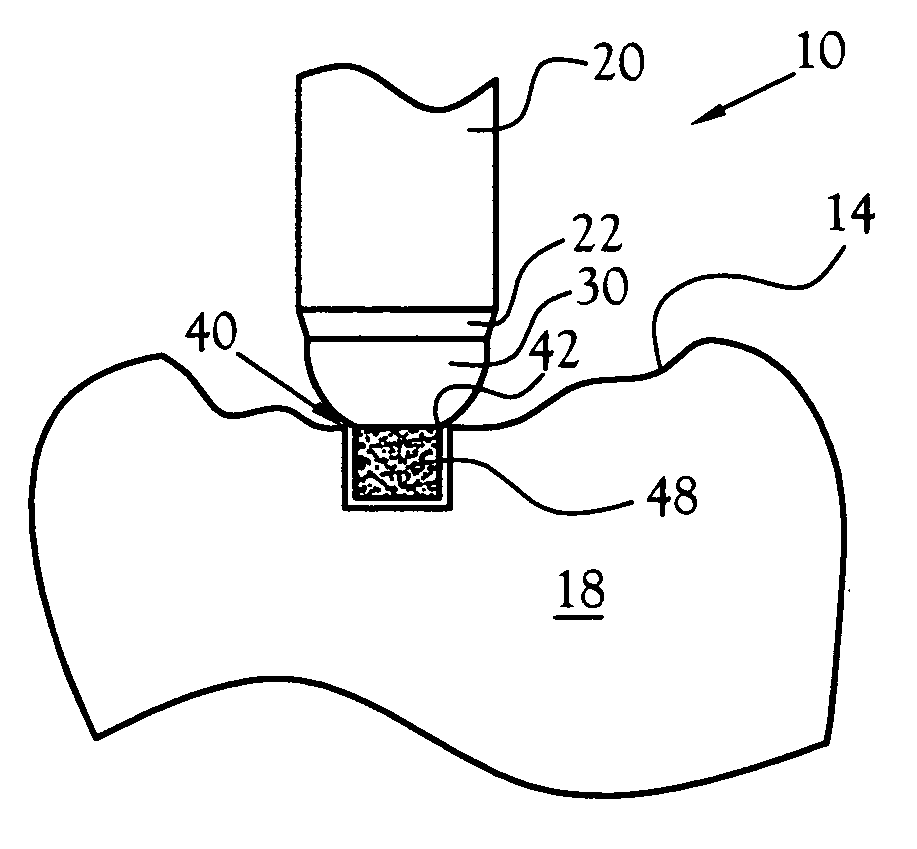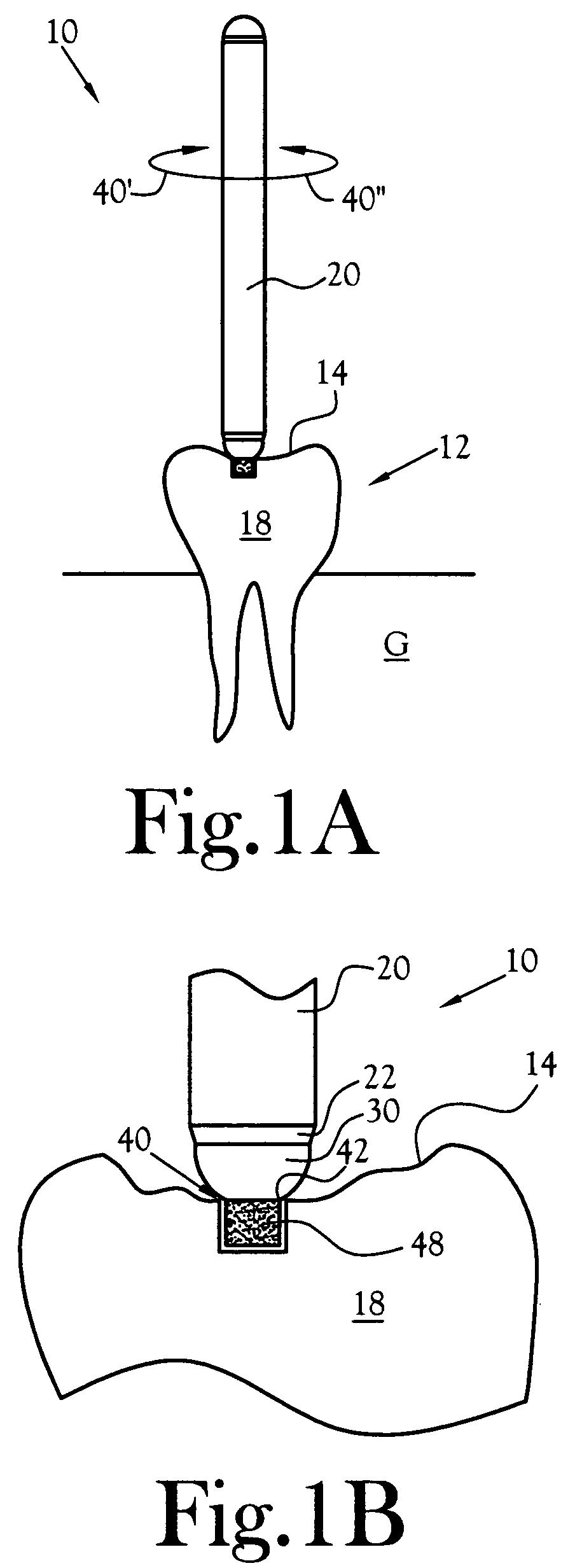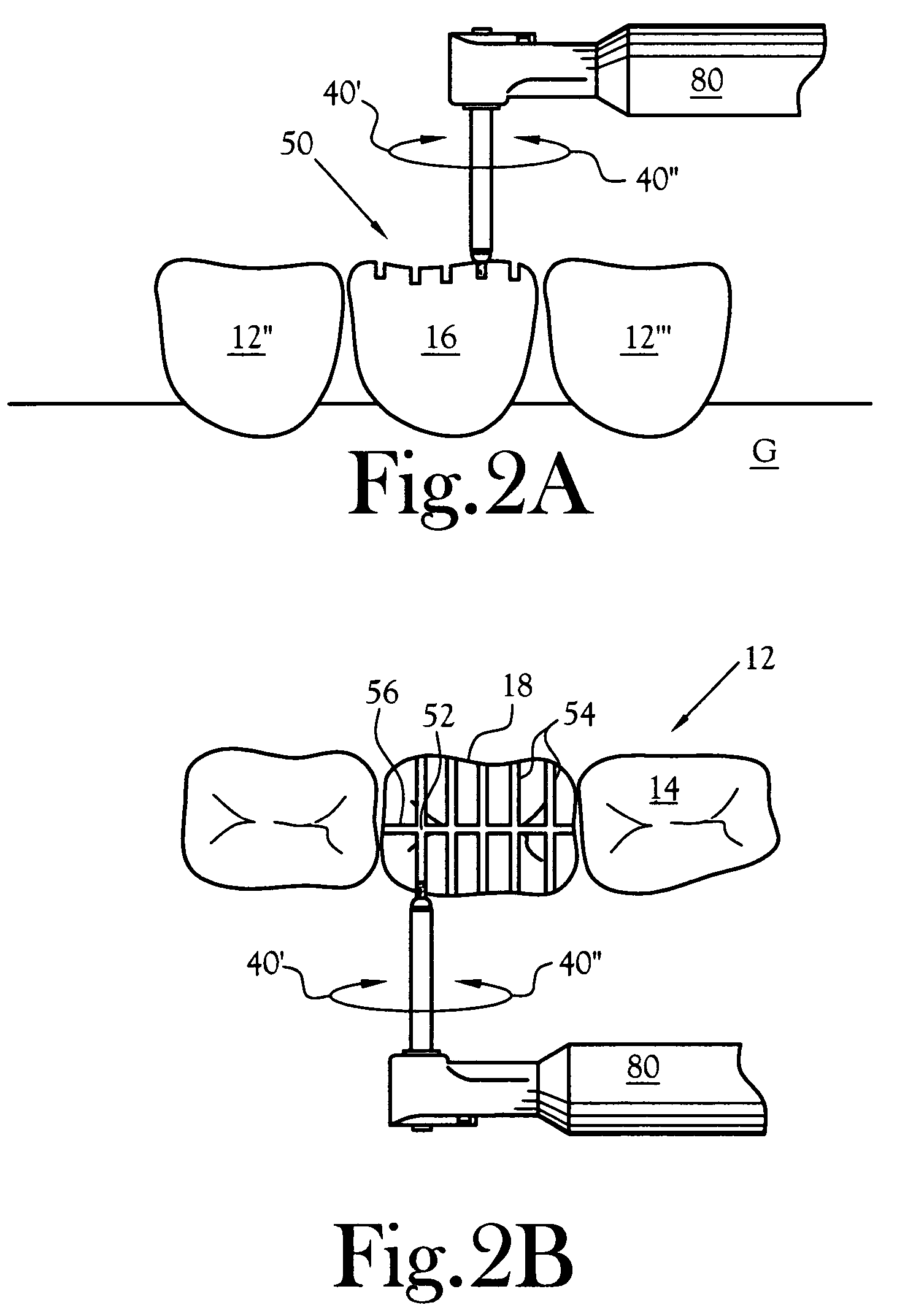Universal depth cut burr having dental and skeletal applications
a universal depth and burr technology, applied in the field of cutting devices, can solve the problems of inherently limited triangular or rectangular cross-section, potential cutting of adjacent tooth surfaces, and inability to meet the needs of patients, so as to reduce the diameter of the crown and/or lateral portion, reduce the risk of cutting into internal tissue and nerves, and reduce the effect of crown and/or lateral dental surfaces
- Summary
- Abstract
- Description
- Claims
- Application Information
AI Technical Summary
Benefits of technology
Problems solved by technology
Method used
Image
Examples
Embodiment Construction
[0032]In accordance with the present invention, a reduction burr 10 is disclosed that provides a self-limiting stop mechanism for limiting the depth of penetration of the burr abrasive surfaces during cutting and reduction of a patient's dental surfaces of a tooth 12 (see FIGS. 1A and 1B). The reduction burr 10 is universally applied to readily reduce all dental surfaces requiring fabrication during tooth restoration, including the crown surface 14, also identified herein as the occlusal surface, the lingual side surface (tongue side) 16, the buccal side surface (cheek side) 18, and either or both lateral surfaces extended between the lingual and buccal side surfaces and disposed proximal of adjacent teeth 12″, 12′″. The reduction burr 10 disclosed herein is highly maneuverable and positionable to provide precise cuts 50, lateral grooves 58, and precise surface reductions for all tooth surfaces 12 disposed above the patient's gingival epithelium (gums) G.
[0033]The self-limiting dept...
PUM
 Login to View More
Login to View More Abstract
Description
Claims
Application Information
 Login to View More
Login to View More - R&D
- Intellectual Property
- Life Sciences
- Materials
- Tech Scout
- Unparalleled Data Quality
- Higher Quality Content
- 60% Fewer Hallucinations
Browse by: Latest US Patents, China's latest patents, Technical Efficacy Thesaurus, Application Domain, Technology Topic, Popular Technical Reports.
© 2025 PatSnap. All rights reserved.Legal|Privacy policy|Modern Slavery Act Transparency Statement|Sitemap|About US| Contact US: help@patsnap.com



